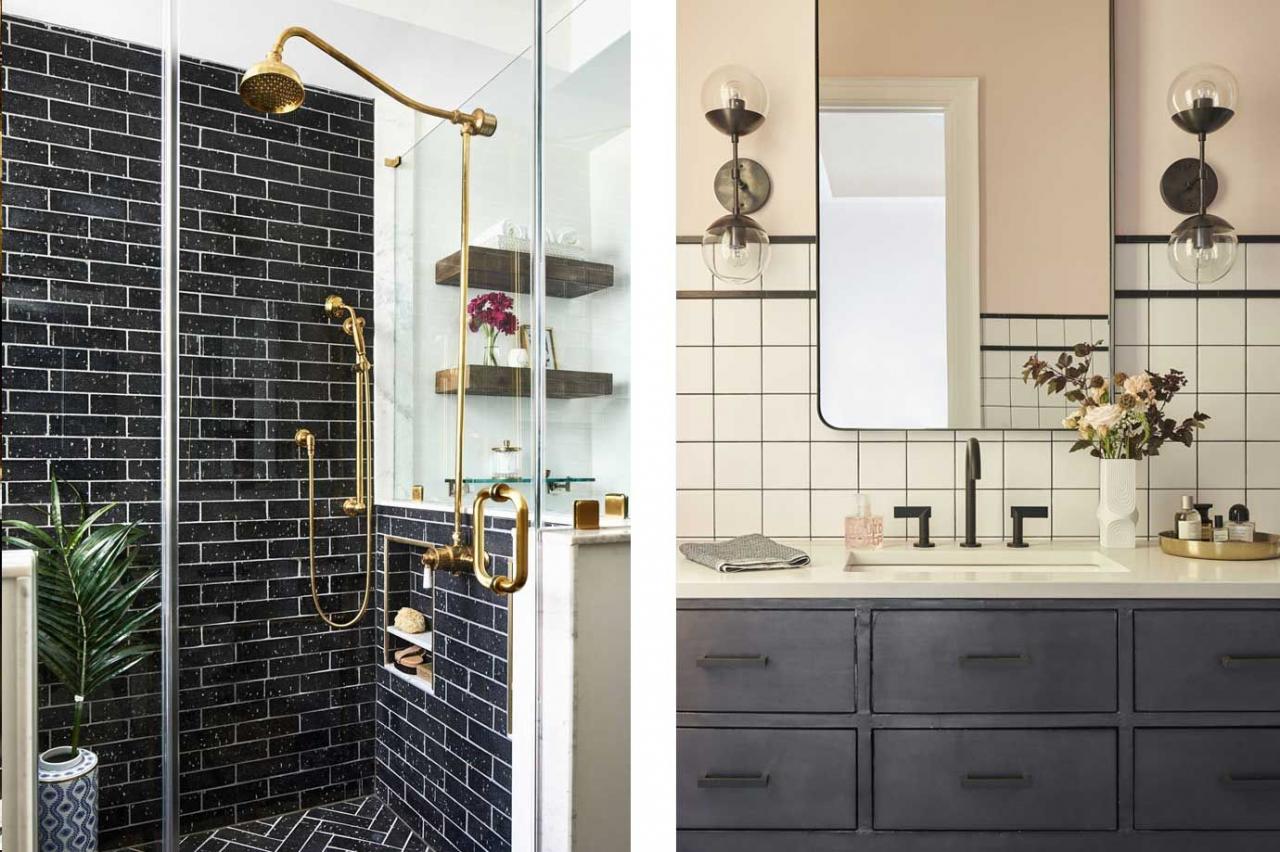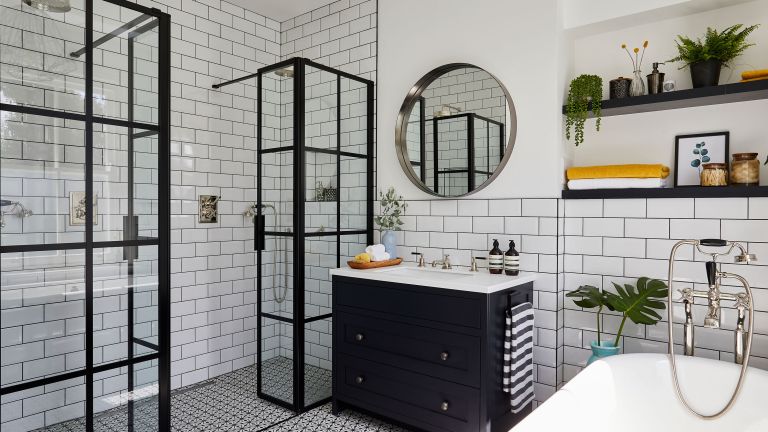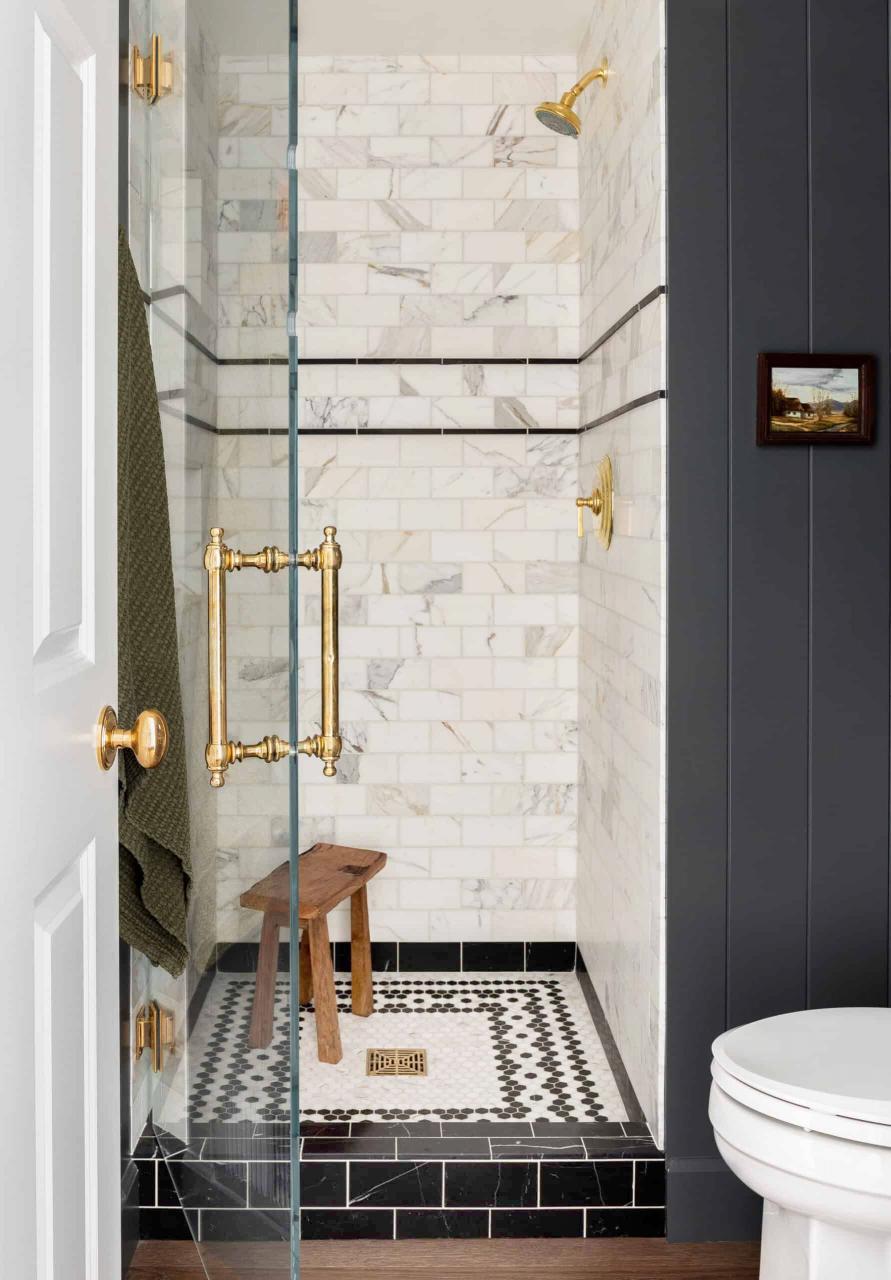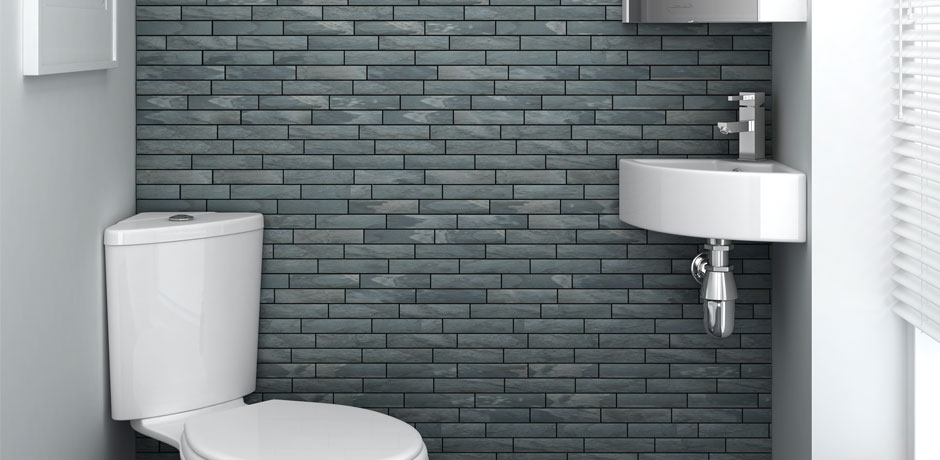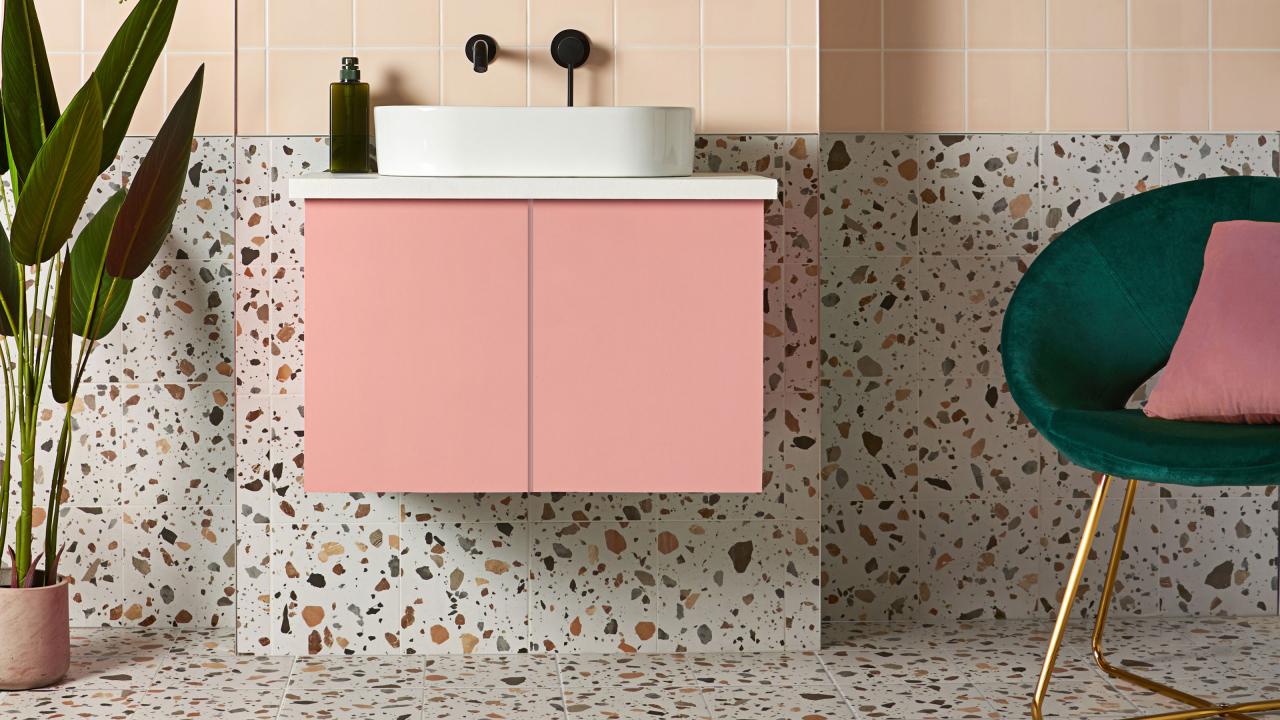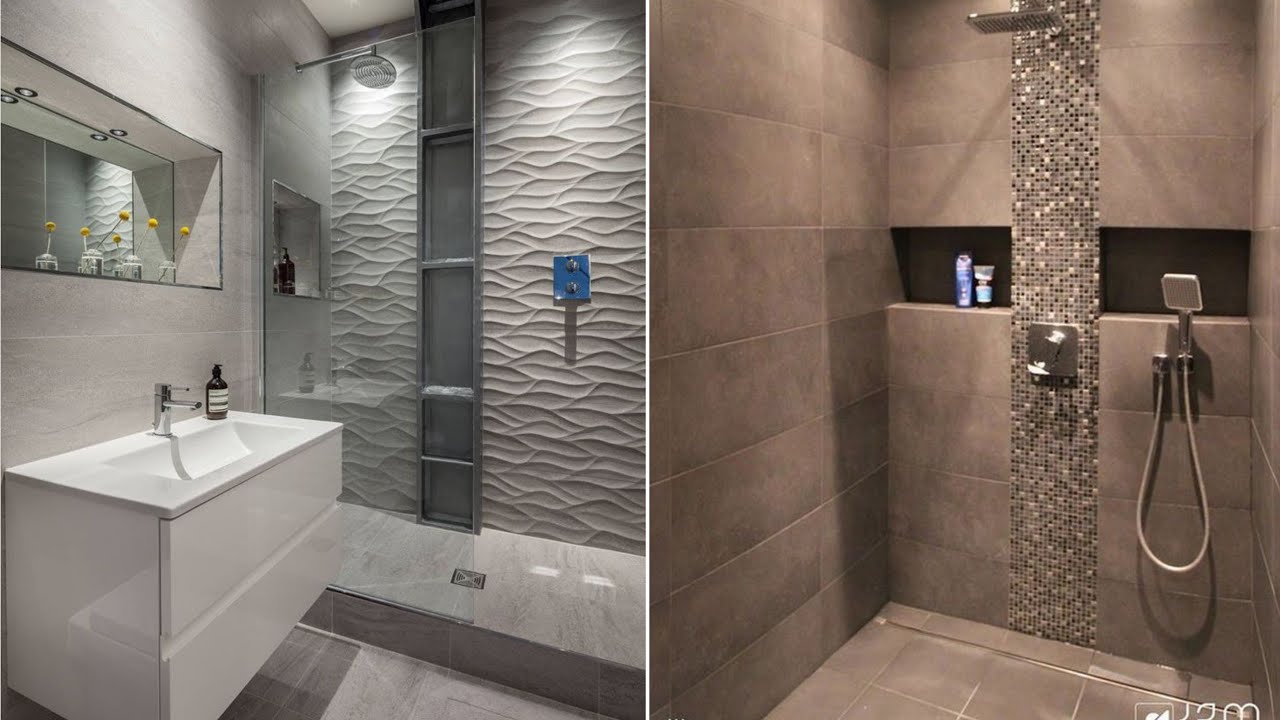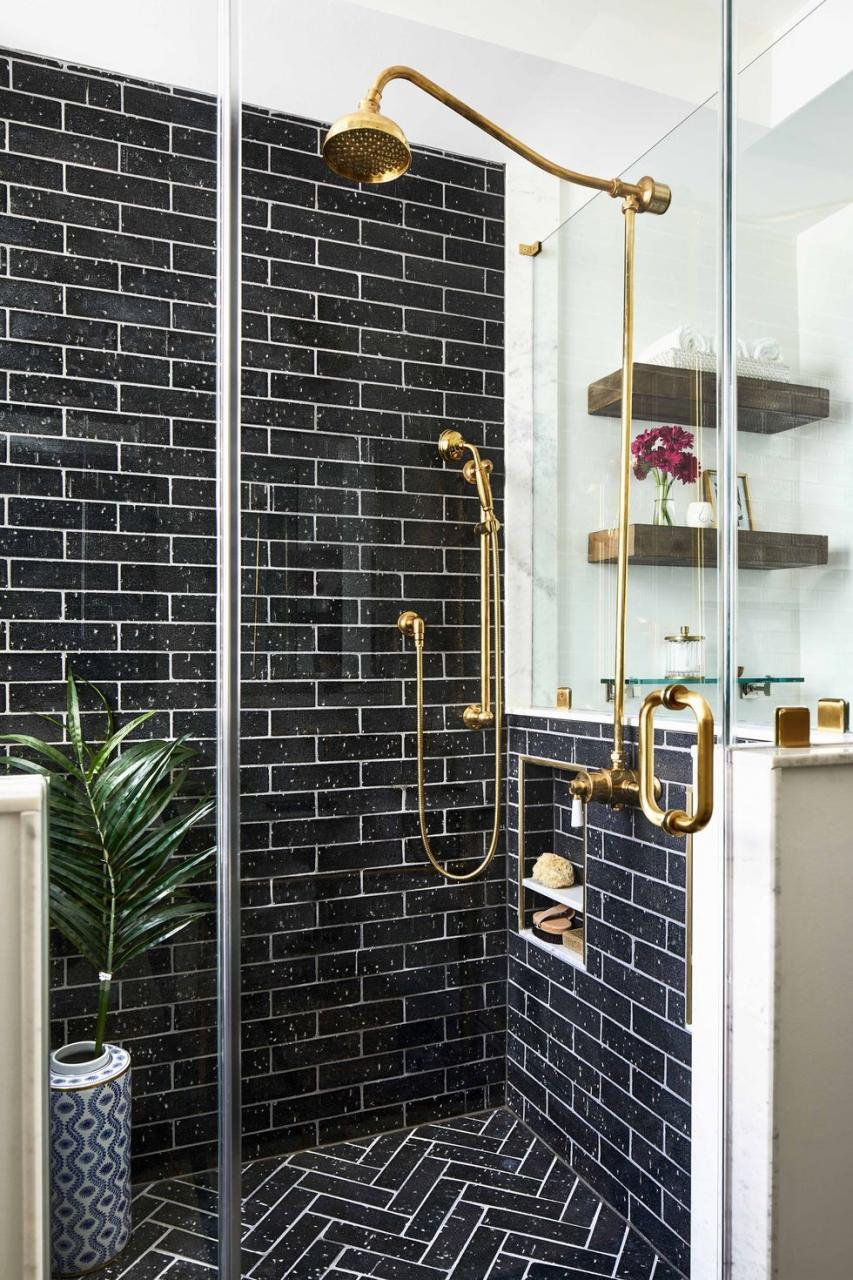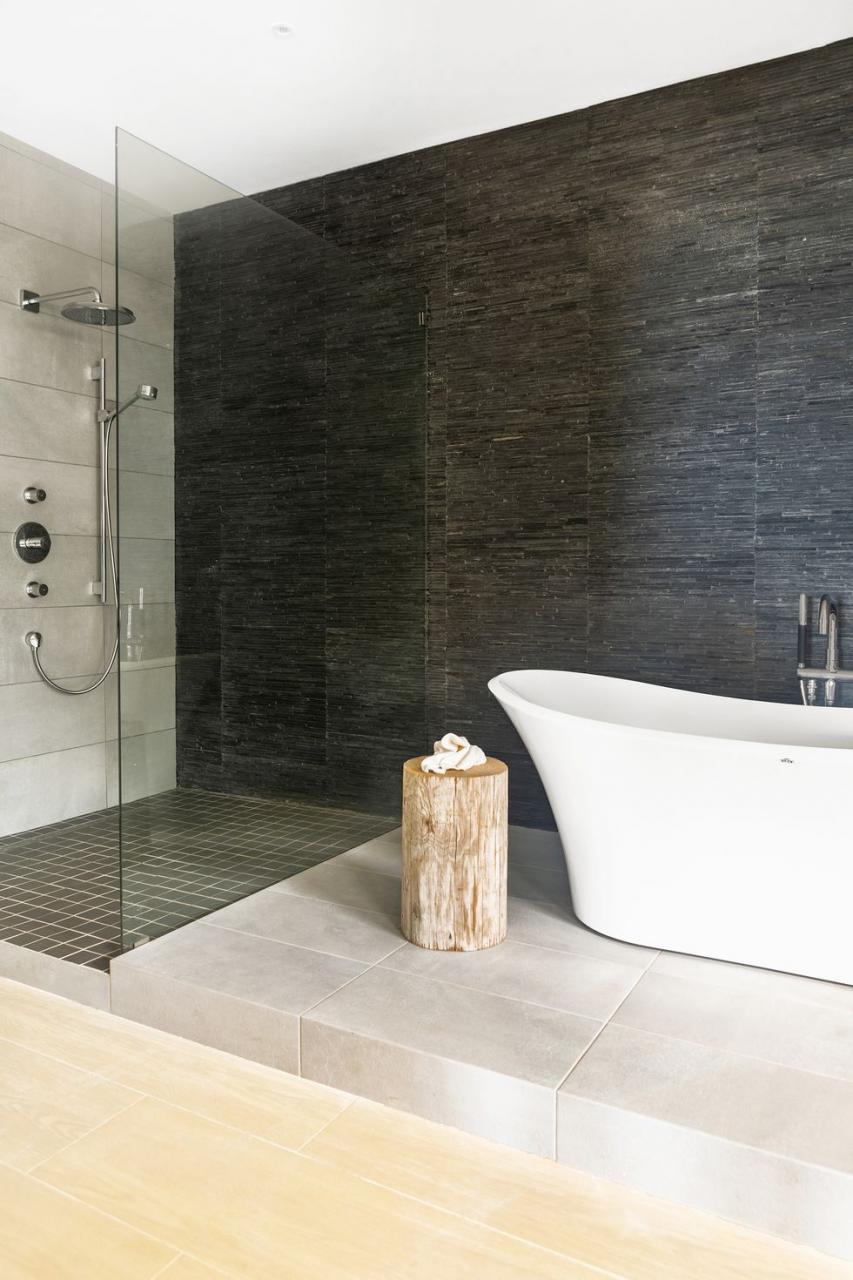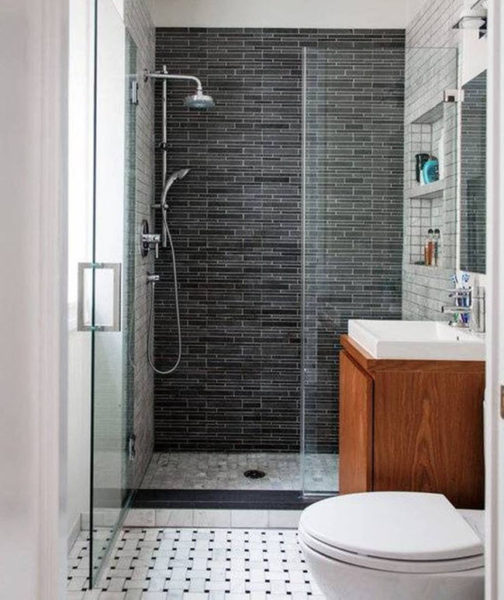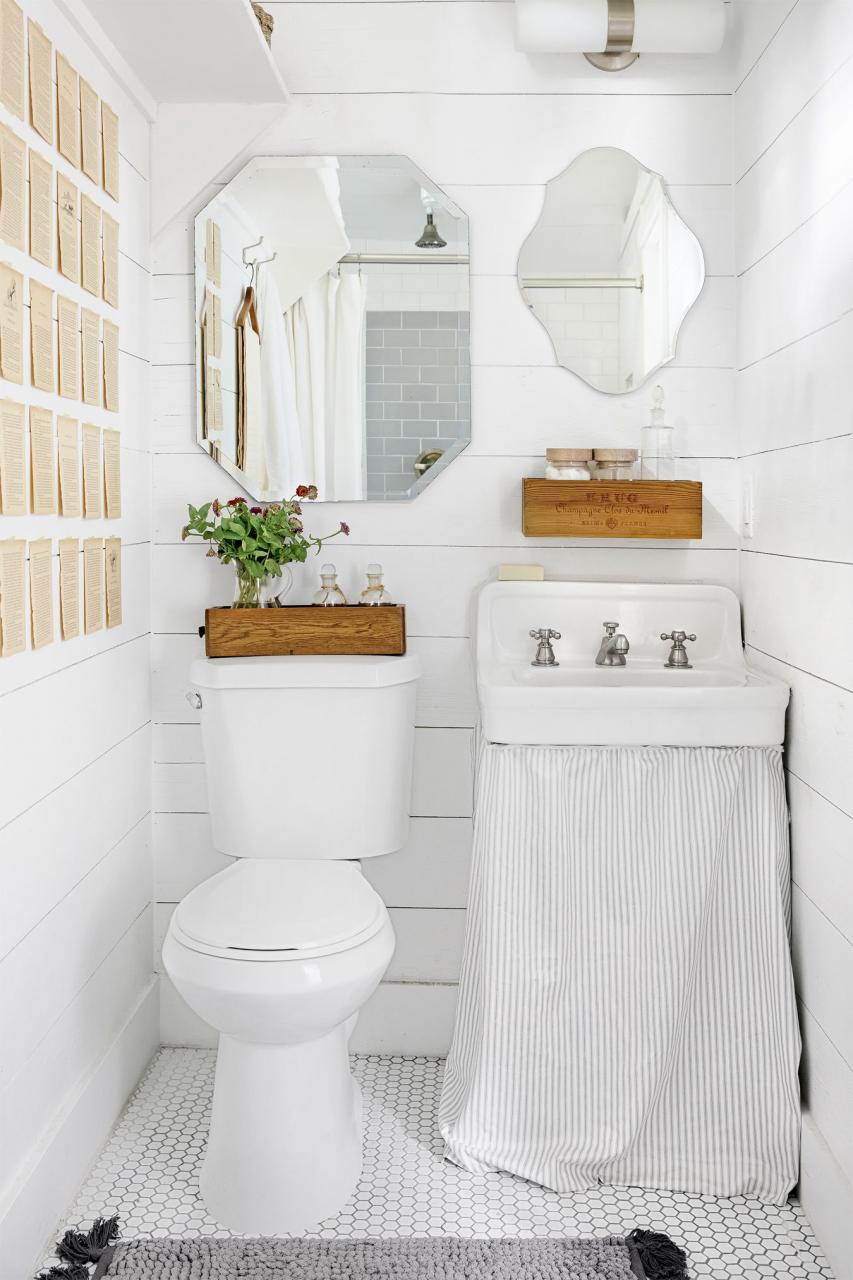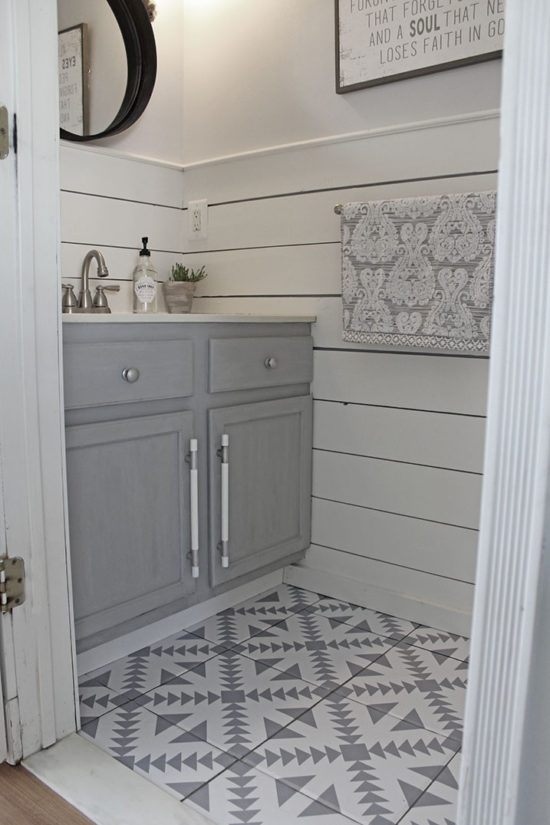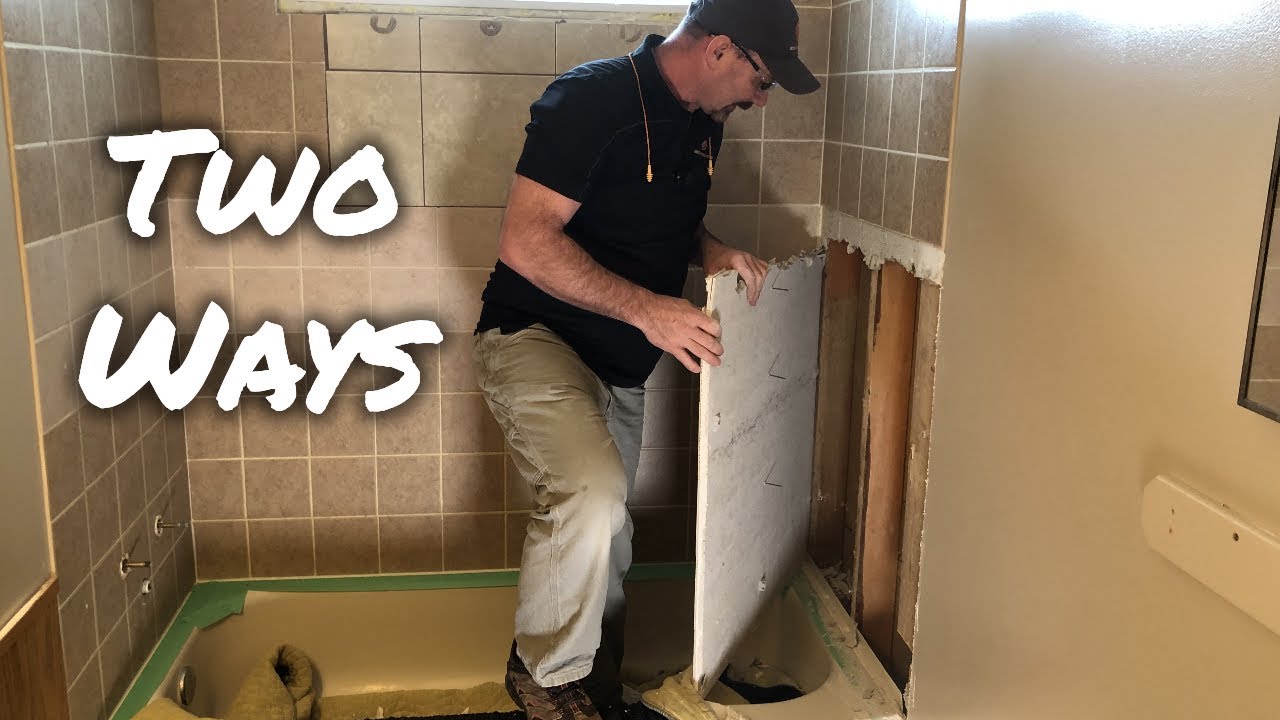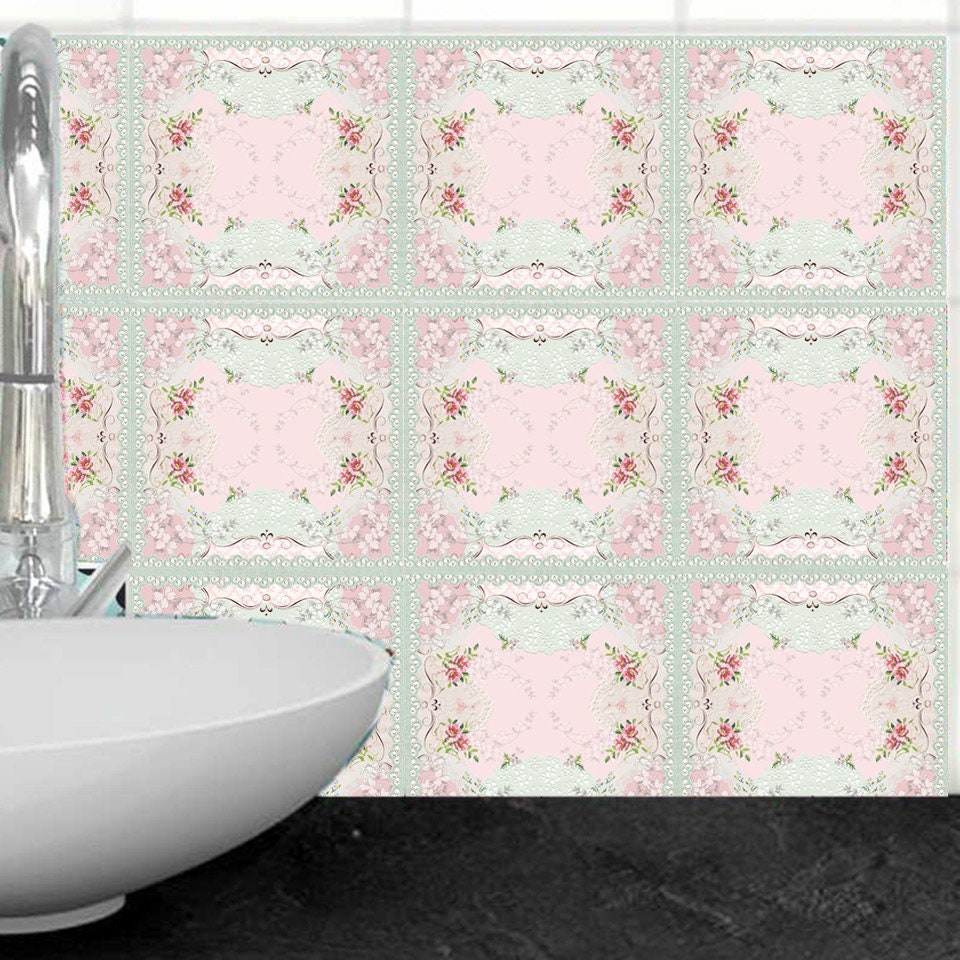Maximizing Space: Tile Design Ideas for Small Bathrooms
When it comes to designing a small bathroom, every inch of space counts. The right tile design can make a world of difference, transforming a cramped area into a stylish and functional space. Here are some ideas on how to maximize space with tile design in your small bathroom:
- Use Large Tiles to Create a Seamless Look: One of the best ways to make a small bathroom feel larger is by using large tiles. Contrary to what you might think, large tiles can make a small space appear more expansive. Fewer grout lines create a seamless look that opens up the room. Consider using large, rectangular tiles on both the floor and walls. This not only reduces visual clutter but also makes cleaning easier since there are fewer grout lines to maintain.
- Go Vertical with Subway Tiles: Subway tiles are a classic choice for bathrooms, but in a small space, how you lay them can make all the difference. Vertical stacking of subway tiles can draw the eye upward, giving the illusion of a higher ceiling. This trick works especially well in bathrooms with low ceilings. Pair the tiles with a contrasting grout color to add visual interest without overwhelming the space.
- Opt for Light, Reflective Tiles: Light-colored, glossy tiles are perfect for reflecting light and making a small bathroom feel brighter and more spacious. White or light grey tiles are popular choices, but you can also experiment with soft pastels like pale blue or mint green. These colors not only enhance the light in the room but also create a clean, airy feel. If you want to add a touch of luxury, consider using tiles with a subtle shimmer or metallic finish.
- Create a Feature Wall: Another way to maximize space is by creating a feature wall with tiles. This could be the wall behind the sink, the shower area, or even the entire wall opposite the door. By using a different tile design or color on this wall, you can draw attention away from the size of the bathroom and instead focus on the design element. A feature wall can add depth and character to the room, making it feel more personalized and less cramped.
- Consider Mosaic Tiles for Small Spaces: Mosaic tiles are a great option for small bathrooms because they can be used to add detail and texture without overwhelming the space. These tiny tiles are perfect for creating intricate designs or highlighting certain areas of the bathroom, such as the backsplash or shower niche. Because mosaic tiles are small, they can be used to create unique patterns or even images, adding a custom touch to your bathroom.
- Extend the Floor Tiles Up the Wall: A clever design trick to make a small bathroom feel larger is to extend the floor tiles up the wall. This creates a continuous line that visually elongates the space. Whether you choose a bold patterned tile or a subtle, neutral one, extending the tiles up the wall can create a sense of continuity and flow in the bathroom. It’s an especially effective technique in narrow bathrooms, where it can help to reduce the feeling of being boxed in.

Top Tile Patterns to Make Your Small Bathroom Feel Larger
Tile patterns can have a big impact on the perceived size of your bathroom. The right pattern can trick the eye into thinking the space is larger than it is. Here are some tile patterns that work wonders in small bathrooms:
Diagonal Tile Patterns
Laying tiles in a diagonal pattern is a classic trick for making a small space appear larger. When tiles are laid diagonally, the eye is drawn across the room, rather than just along the walls. This creates a sense of movement and expands the visual boundaries of the space. Whether you’re using large tiles or small ones, a diagonal pattern can make a significant difference in how spacious your bathroom feels.
Herringbone and Chevron Patterns
Herringbone and chevron patterns are not only stylish but also effective in small spaces. These patterns create a zigzag effect that adds visual interest and depth to the room. Herringbone is a more subtle pattern, with tiles laid in a V-shaped design, while chevron is more dramatic, with tiles cut at an angle to create a continuous, seamless line. Both patterns can make your bathroom floor or walls appear more dynamic and expansive.
Brick Bond (Running Bond) Pattern
The brick bond, or running bond pattern, is another excellent choice for small bathrooms. In this pattern, tiles are laid in a staggered arrangement, similar to brickwork. This pattern helps to break up the grid-like effect that can make a small space feel smaller. The staggered lines draw the eye across the room, creating the illusion of a larger area. It’s a versatile pattern that works well with various tile sizes and shapes.
Large-Format Tiles with Minimal Grout Lines
If you prefer a more modern and sleek look, consider using large-format tiles in a simple grid pattern. The key to making this pattern work in a small bathroom is to use minimal grout lines. The fewer the grout lines, the less busy the space will appear. Large tiles with minimal grout create a streamlined look that can make the room feel more open and spacious. This pattern is particularly effective in contemporary or minimalist designs.
Hexagon Tiles for Added Dimension
Hexagon tiles are a trendy choice that can add dimension to a small bathroom. The unique shape of hexagon tiles creates a honeycomb effect that draws the eye and adds depth to the room. You can use hexagon tiles on the floor or walls, or even both for a cohesive look. For a more dramatic effect, choose contrasting grout to highlight the geometric pattern. Hexagon tiles work particularly well in modern or eclectic bathroom designs.
Vertical Stacked Tiles
For a clean, modern look that also enhances the height of your bathroom, consider vertical stacked tiles. This pattern involves laying tiles directly on top of each other in a straight line. Vertical stacking emphasizes the height of the walls, making the room feel taller. It’s a simple yet effective pattern that works well with both rectangular and square tiles. If you want to add a bit more interest, consider using contrasting colors or a bold accent tile in the mix.
Choosing the Right Color Tiles for a Compact Bathroom
Color plays a crucial role in how a small bathroom is perceived. The right tile colors can make a compact bathroom feel larger, brighter, and more inviting. Here’s how to choose the perfect tile colors for your small space:
Stick to Light, Neutral Tones
When it comes to small bathrooms, light and neutral tones are your best friends. Colors like white, beige, light gray, and soft pastels reflect more light, making the room feel more open and airy. These colors also have a calming effect, which is ideal for a bathroom. Light tiles can make the walls recede, giving the illusion of more space. If you’re worried about the bathroom feeling too sterile, you can always add color through accessories or a feature wall.
Consider Monochromatic Schemes
A monochromatic color scheme involves using different shades of the same color throughout the bathroom. This approach can create a cohesive and harmonious look, making the space feel more unified. For example, you might choose a soft gray for the walls, a slightly darker gray for the floor, and white fixtures. The subtle variations in shade add depth and interest without overwhelming the space. Monochromatic schemes work particularly well in modern and minimalist bathroom designs.
Use Cool Colors to Create a Calm Atmosphere
Cool colors, such as blues, greens, and purples, can create a soothing and serene atmosphere in a small bathroom. These colors tend to recede, making the walls appear farther away and the space feel larger. Pale blue or mint green tiles, for example, can give your bathroom a fresh, spa-like feel. If you prefer a bit more color, consider using a deeper shade as an accent or on the floor, while keeping the walls a lighter, cooler tone.
Add Warmth with Earthy Tones
If you want to create a warm and inviting atmosphere in your small bathroom, consider using earthy tones like soft browns, tans, or terracotta. These colors can make the space feel cozy and intimate, without making it look smaller. Earthy tones are particularly effective when paired with natural materials like wood or stone. For example, you might use tan tiles on the floor and a wood vanity to create a warm, rustic look.
Incorporate Pops of Color Sparingly
While it’s best to keep the overall color scheme light and neutral, adding a pop of color can bring personality to your bathroom. Consider using a bright or bold color as an accent on a feature wall, backsplash, or even just in the shower niche. This adds visual interest without overwhelming the space. For example, a strip of deep blue or emerald green tiles behind the sink can create a striking focal point in an otherwise neutral bathroom.
Don’t Be Afraid of Dark Colors—In Moderation
While light colors are generally recommended for small bathrooms, dark colors can also work if used correctly. Dark tiles can add drama and sophistication to a small bathroom, especially when paired with light-colored fixtures and accessories. However, it’s important not to overdo it—too much dark color can make the space feel cramped. Consider using dark tiles on the floor or as an accent wall, while keeping the rest of the room light and airy.
How to Use Tile Textures to Add Depth to a Small Bathroom
Texture is a powerful design element that can add depth and interest to a small bathroom. Here’s how to use different tile textures to enhance your space:
Mix Glossy and Matte Finishes
One of the easiest ways to add depth to a small bathroom is by mixing glossy and matte tiles. Glossy tiles reflect light, making the space feel brighter and more open, while matte tiles add a touch of sophistication and create contrast. For example, you might use glossy tiles on the walls to maximize light reflection and matte tiles on the floor for a more grounded, textural feel. The combination of textures can make the room feel more dynamic and layered.
Incorporate Natural Stone Tiles
Natural stone tiles, such as marble, granite, or slate, are a great way to add texture and depth to a small bathroom. These materials have a unique, organic feel that adds warmth and character to the space. The natural variation in stone tiles creates a sense of movement and interest, making the room feel more expansive. Whether you use stone tiles on the floor, in the shower, or as a feature wall, they can add a touch of luxury to your bathroom.
Use 3D Textured Tiles for a Statement Wall
3D textured tiles are a bold choice that can create a stunning focal point in a small bathroom. These tiles have raised patterns that add dimension and visual interest to the space. Because they create shadows and highlights, 3D tiles can make a small bathroom feel more dynamic and spacious. Consider using 3D tiles on a feature wall behind the sink or in the shower for maximum impact. Just be sure to balance them with simpler, flat tiles elsewhere in the room to avoid overwhelming the space.
Add a Touch of Luxury with Mosaic Tiles
Mosaic tiles are a versatile option for adding texture to a small bathroom. These tiny tiles can be used to create intricate patterns or to highlight certain areas, such as the shower niche or backsplash. Mosaic tiles come in a variety of materials, including glass, ceramic, and stone, allowing you to create a custom look. The small size of the tiles also makes them perfect for adding texture without taking up too much visual space. Consider using mosaic tiles to create a border or an accent strip for a touch of luxury.
Opt for Textured Porcelain or Ceramic Tiles
If you’re looking for a more subtle way to add texture, consider textured porcelain or ceramic tiles. These tiles often have a slight texture, such as a wood grain or stone-like finish, that adds interest without being too bold. Textured tiles are perfect for adding depth to a small bathroom while maintaining a clean and modern look. They also offer practical benefits, such as increased slip resistance, making them a great choice for bathroom floors.
Play with Contrasting Textures
For a truly dynamic look, try combining contrasting textures in your small bathroom. For example, pair smooth, glossy tiles with rough, textured ones to create a striking contrast. This approach can add a lot of visual interest and make the space feel more layered and complex. You might use smooth tiles on the walls and textured tiles on the floor, or vice versa. Just be careful not to overdo it—too many different textures can make the space feel cluttered.
Creative Ways to Incorporate Accent Tiles in Small Bathrooms
Accent tiles are a great way to add personality and style to a small bathroom without overwhelming the space. Here are some creative ways to incorporate accent tiles into your design:
Create a Bold Backsplash
One of the most popular ways to use accent tiles is to create a bold backsplash behind the sink. This area is a natural focal point, and a splash of color or pattern can make it stand out. Consider using bright, patterned tiles or a contrasting color to make the backsplash a statement piece in your bathroom. The beauty of a backsplash is that it’s a relatively small area, so you can experiment with bolder designs without overwhelming the entire space.
Highlight the Shower Niche
The shower niche is another perfect spot for accent tiles. This recessed shelf is often overlooked, but with the right tiles, it can become a standout feature. Consider using a different color, material, or pattern inside the niche to create a visual contrast with the rest of the shower. Not only does this add a touch of style, but it also makes the niche more functional by drawing attention to it.
Add a Decorative Border
A decorative tile border is a subtle yet effective way to add a bit of flair to your small bathroom. You can place the border at eye level around the room, along the top of the backsplash, or even around the edges of the floor. Choose tiles that contrast with the main tiles in either color or pattern for a look that stands out. This is a great way to add detail without taking up too much visual space.
Use Accent Tiles in the Shower
Accent tiles in the shower can create a luxurious spa-like feel. Consider creating a vertical strip of accent tiles from floor to ceiling, or use them to outline the shower area. This not only adds visual interest but also helps to define the space. For a more subtle effect, use accent tiles in a tone that complements the main tiles, or go bold with a contrasting color or pattern.
Make a Statement with the Floor
If you want to make a big impact in your small bathroom, consider using accent tiles on the floor. A patterned or colorful tile floor can serve as a focal point and add a lot of character to the space. This works particularly well in bathrooms with simple, neutral walls. Whether you choose a classic black-and-white pattern, a colorful mosaic, or a bold geometric design, an accent tile floor can make your bathroom truly unique.
Frame a Mirror or Vanity
Another creative way to use accent tiles is to frame the mirror or vanity area. This adds a decorative touch and can help define the space. You might use a different color or pattern around the edges of the mirror or create a tile border around the vanity. This technique works especially well in small bathrooms, where the vanity area is often the main focal point. It’s a simple yet effective way to add a custom touch to your design.
Budget-Friendly Tile Options for Small Bathroom Renovations
Renovating a small bathroom doesn’t have to break the bank. Here are some budget-friendly tile options that can help you achieve a stylish look without overspending:
Ceramic Tiles: Affordable and Versatile
Ceramic tiles are one of the most budget-friendly options for small bathroom renovations. They come in a wide range of colors, sizes, and styles, making them a versatile choice for any design. Ceramic tiles are also easy to clean and maintain, which is a big plus for bathrooms. Whether you’re looking for a simple white tile or something more decorative, ceramic tiles offer plenty of options at an affordable price.
Porcelain Tiles for a High-End Look
If you want the look of natural stone without the high price tag, porcelain tiles are a great alternative. Porcelain tiles are more durable and less porous than ceramic tiles, making them ideal for wet areas like bathrooms. They can mimic the look of marble, granite, or wood, giving your bathroom a high-end feel without the cost. Porcelain tiles are also available in a variety of shapes and sizes, allowing you to create a custom look on a budget.
Vinyl Tiles for Easy Installation
Vinyl tiles are another budget-friendly option that’s gaining popularity in bathroom renovations. These tiles are easy to install, often coming in peel-and-stick formats, which can save you money on labor costs. Vinyl tiles are available in a variety of styles, including designs that mimic wood, stone, or ceramic. They’re also water-resistant and durable, making them a practical choice for bathrooms. If you’re looking for an affordable and DIY-friendly option, vinyl tiles are worth considering.
Glass Tiles for a Splash of Color
Glass tiles can add a splash of color and a touch of luxury to your small bathroom without breaking the bank. While glass tiles can be more expensive than ceramic or vinyl, you can save money by using them sparingly as accents rather than covering entire walls or floors. Consider using glass tiles in a backsplash, shower niche, or as a decorative border. Their reflective quality can also help make a small bathroom feel brighter and more open.
Mosaic Tiles for Artistic Flair
Mosaic tiles are a great way to add artistic flair to your small bathroom on a budget. These tiles come in sheets, which makes them easier to install and less expensive than buying individual tiles. Mosaic tiles can be used to create intricate patterns or designs, adding a custom look to your bathroom. Whether you use them as a backsplash, in the shower, or on the floor, mosaic tiles offer a lot of design possibilities at a reasonable price.
Subway Tiles for a Classic Look
Subway tiles are a timeless and budget-friendly option for small bathroom renovations. These rectangular tiles are often sold in packs, making them more affordable than many other tile options. Subway tiles are easy to install and maintain, and they work well in a variety of design styles, from classic to contemporary. To keep costs down, consider using basic white subway tiles and adding interest with contrasting grout or an accent border.
Common Mistakes to Avoid
Tiling a small bathroom can be tricky, and it’s easy to make mistakes that can detract from the overall look and functionality of the space. Here are some common mistakes to avoid:
Choosing the Wrong Tile Size
One of the most common mistakes people make when tiling a small bathroom is choosing the wrong tile size. While small tiles might seem like the obvious choice, they can actually make a small bathroom feel more cluttered. Too many grout lines can break up the space and make it feel smaller. On the other hand, oversized tiles can create an overwhelming effect. The key is to find a balance—medium-sized tiles often work best in small bathrooms.
Using Too Many Different Tiles
Another mistake to avoid is using too many different types of tiles. While it’s tempting to mix and match for a unique look, too many different patterns and colors can create visual clutter and make the bathroom feel chaotic. In a small space, it’s best to stick to a limited color palette and choose one or two tile styles to create a cohesive look. If you want to add interest, do so with accents or feature walls rather than mixing too many different tiles.
Ignoring the Grout Color
Grout color is often overlooked, but it can have a big impact on the overall look of your bathroom. Dark grout can create a strong contrast with light tiles, making the grout lines more noticeable and potentially breaking up the space. On the other hand, matching the grout color to the tiles can create a seamless look that makes the room feel larger. When choosing grout, consider how it will complement or contrast with your tiles and the overall design.
Not Considering Slip Resistance
Safety should always be a priority in a bathroom, especially when it comes to the floor. One common mistake is choosing tiles that are too smooth and slippery for the bathroom floor. While glossy tiles can be beautiful, they can also be dangerous when wet. Make sure to choose tiles with a textured surface or a slip-resistant finish for the floor, especially in the shower area. This will help prevent accidents and ensure that your bathroom is both stylish and safe.
Skipping the Waterproofing
Waterproofing is essential in any bathroom, but it’s especially important in a small bathroom where moisture can easily become trapped. Skipping this step can lead to water damage, mold, and mildew, which can ruin your tiles and cause costly repairs. Make sure to properly waterproof the walls and floors before installing tiles, particularly in the shower and around the sink. This will help protect your investment and keep your bathroom looking great for years to come.
Not Planning the Layout
Finally, one of the biggest mistakes you can make is not planning the tile layout carefully. In a small bathroom, every detail matters, and a poorly planned layout can make the space look awkward or unbalanced. Take the time to measure the space and plan the placement of the tiles before you start. Consider how the tiles will align with fixtures like the sink, toilet, and shower, and make sure that cuts are made in less visible areas. A well-planned layout will make the tiling process smoother and result in a more professional-looking finish.
Creative Bathroom Tile Design Ideas
Bathroom Tile Ideas – Bath Tile Backsplash and Floor Designs
Big Tile or Little Tile? How to Design for Small Bathrooms
Best Bathroom Tile Ideas – Beautiful Floor and Wall Tile
Related Posts:
